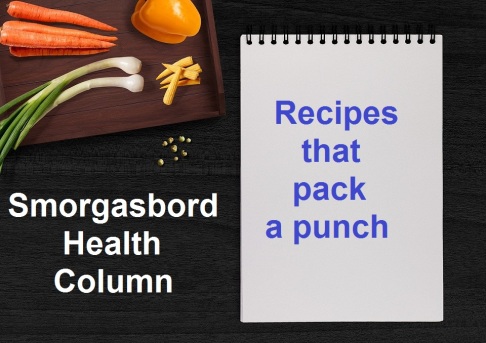
So far in this series I have shared recipes for dishes that contain ingredients that are packed with nutrients. Today’s recipe is for one of the simplest meals we can fix, in minutes. A chicken sandwich. Of course not all sandwiches are created equal and some are more nutritional than others, but you can rest assured that your body will take every last bit of goodness out of that sandwich, and treat it with same respect it would do for a Michelin starred 18 course taster menu.
Some of you will recognise this post from two years ago but I hope that those of you who have not read it, will enjoy finding out what happens to a Chicken Sandwich when it passes through your system. (If you want to check out the nutrients in the ingredients you can find them Weekly Shopping List by Nutrient)
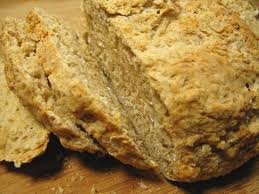
Ingredients for my chicken sandwich
- Homemade wholegrain bread and you can find my recipe (Yeast Free Irish Soda Bread)
- A good swipe of grass fed butter (grass fed daily contains more of the essential K2 vitamin)
- A dollop of homemade mayonnaise, recipe in last week’s post (chilled soups, salads and dressings
- Mix of lettuce, spinach, rocket and watercress baby leaves
- Fresh roasted chicken breast or thigh meat
- Thinly sliced tomato
- Half an avocado
- Seasoning to taste
I am sure I don’t need to tell you how to put these together to create a delicious sandwich.
Our body is pretty amazing but it is not a magician. You do not eat a meal and are suddenly flooded with vitamins and minerals. It is necessary for the food to go through a complex process before its nutrients can be utilised to boost our immune system and provide us with energy.
For that task we need enzymes and other ingredients produced by our organs. For the purpose of this post I am going to use share what happens to that delicious sandwich from the moment you take that first mouthful. At that point one of the most complex systems in our body is already at work to get what it needs from this simple meal.
The journey of the chicken sandwich from first bite to fuelling your immune system, building bones, feeding your brain, protecting your heart and keeping your gut full of healthy bacteria.
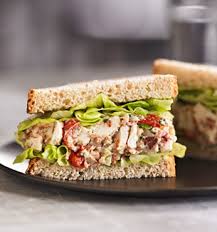 You take your first bite of a wholegrain sandwich with chicken and salad, a bit of butter and a smidgen salt and mayonnaise (lovely)- in the meantime your teeth, tongue and salivary glands that produce the first phase of enzymes begin the digestive process before passing the food (properly chewed is helpful) into the pharynx at the back of the throat. For example amylase produced by the salivary glands converts the bread in the sandwich into pairs of sugars, or dissacharides.
You take your first bite of a wholegrain sandwich with chicken and salad, a bit of butter and a smidgen salt and mayonnaise (lovely)- in the meantime your teeth, tongue and salivary glands that produce the first phase of enzymes begin the digestive process before passing the food (properly chewed is helpful) into the pharynx at the back of the throat. For example amylase produced by the salivary glands converts the bread in the sandwich into pairs of sugars, or dissacharides.
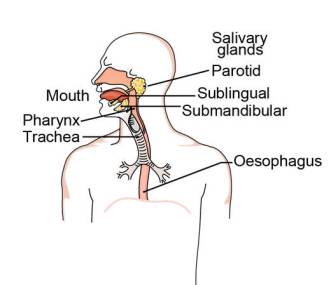 The food then passes into the oesophagus through to the stomach where hydrochloric acid modifies pepsinogen, secreted by the stomach lining to form an enzyme called pepsin. Pepsin breaks down the chicken into smaller units called polypeptides and lipase will break down any fatty globules into glycerol and fatty acids. The acid in the stomach will also kill as much harmful bacteria as possible (not only in the food itself but passed on from the hands that made it and the board it was made on). The end result is a highly acidic liquid that is passed into the duodenum.
The food then passes into the oesophagus through to the stomach where hydrochloric acid modifies pepsinogen, secreted by the stomach lining to form an enzyme called pepsin. Pepsin breaks down the chicken into smaller units called polypeptides and lipase will break down any fatty globules into glycerol and fatty acids. The acid in the stomach will also kill as much harmful bacteria as possible (not only in the food itself but passed on from the hands that made it and the board it was made on). The end result is a highly acidic liquid that is passed into the duodenum.
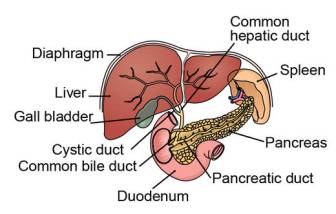 The duodenum will secrete a mucus in response to two hormones (secretin and pancreozymin) that are released to neutralise the acidic liquid that was your chicken sandwich. Bile is also passed into the duodenum either directly from the liver or from the gallbladder where it has been stored.
The duodenum will secrete a mucus in response to two hormones (secretin and pancreozymin) that are released to neutralise the acidic liquid that was your chicken sandwich. Bile is also passed into the duodenum either directly from the liver or from the gallbladder where it has been stored.
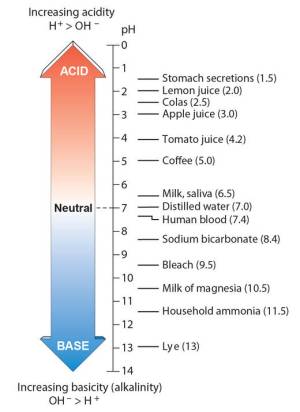 Bile is a complex fluid containing water, electrolytes and organic molecules including bile acids, cholesterol, phospholipids and bilirubin essential for the digestion of fats and their absorption along with fat-soluble vitamins as they pass through the small intestine. The bile has also picked up the waste products that have been accumulating in the liver so that they can be passed through the colon for elimination.
Bile is a complex fluid containing water, electrolytes and organic molecules including bile acids, cholesterol, phospholipids and bilirubin essential for the digestion of fats and their absorption along with fat-soluble vitamins as they pass through the small intestine. The bile has also picked up the waste products that have been accumulating in the liver so that they can be passed through the colon for elimination.
This is when total levels of cholesterol are affected by the efficiency of the bile process. Cholesterol not only comes from food but is also manufactured in the liver. It is virtually insoluble in most fluids except for bile where the acids and fats such as lecithin do the job. If this process is not effective cholesterol can collect into stones that block the ducts and cause problems with the digestion of fat. Bile levels in the body are lowest after fasting which is why you have a cholesterol test at least 12 hours after your last meal.
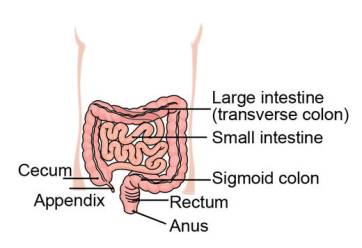 By the time the liquid sandwich reaches the duodenum the particles within it are already very small, however they need to be smaller still before they pass into the ileum, where the final chemical processing will take place. The enzymes that have joined the mix from the pancreas and amylase will break down the food even further into peptides and maltose which is a disaccharide sugar.7. The small intestine is lined by millions of villi, tiny hair like projections which each contain a capillary and a tiny branch of the lymphatic system called a lacteal. More enzymes maltase, sucrase and lactase are produced to facilitate the absorption of the smaller particles through the villi – including breaking down the sugar pairs into single sugars called monosaccharides which pass through easily.
By the time the liquid sandwich reaches the duodenum the particles within it are already very small, however they need to be smaller still before they pass into the ileum, where the final chemical processing will take place. The enzymes that have joined the mix from the pancreas and amylase will break down the food even further into peptides and maltose which is a disaccharide sugar.7. The small intestine is lined by millions of villi, tiny hair like projections which each contain a capillary and a tiny branch of the lymphatic system called a lacteal. More enzymes maltase, sucrase and lactase are produced to facilitate the absorption of the smaller particles through the villi – including breaking down the sugar pairs into single sugars called monosaccharides which pass through easily.
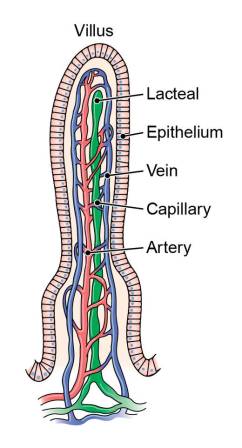
The glycerol, fatty acids and the now dissolved vitamins are sucked up into the lymphatic system through the lacteal and into the bloodstream. Other nutrients such as amino acids, sugars and minerals are absorbed into the capillary in the villi which connects directly to the hepatic portal vein and the liver. It is here, in the liver that certain nutrients will be extracted and stored for later use whilst others are passed onto the body.
The carbohydrate in the sandwich we have eaten has been broken down into first pairs of sugars and then into single sugar molecules and have passed through the villi into the liver. Glucose provides our energy and the liver will determine current levels in our system, how much glucose to convert to glycogen to store and how much to release directly into the bloodstream, as long term imbalance can cause diabetes.
Once all the nutrients have been extracted and passed into the bloodstream, lymphatic system or liver, any insoluble and undigested food moves into the large intestine. Any water and salt remaining in the mixture is absorbed into the lining of the intestine and the remainder mixes with all the other waste products produced by the body such as bacteria and dead cells – it is then pack and pressed and stored for excretion.
So there goes the last of your chicken sandwich.
I hope it puts a different perspective on the food that you are putting into your mouth – it also is important to remember that if you have a white diet, white grains, fats and sugars lacking in sufficient healthy fats, vegetables and fruits, you are giving your body a great deal less to work with, and your body and immune system will struggle to get what it needs to be healthy.
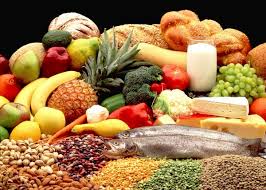 The only foods that provide our digestive system with the raw ingredients to maintain and boost our immune systems are natural, unprocessed vegetables, fruit, protein, wholegrain carbohydrates and healthy fats. This does not mean that you cannot eat white flour products, for example sourdough bread because of the live nature of the fermentation process is a healthier alternative to store bought plastic cheap white bread.
The only foods that provide our digestive system with the raw ingredients to maintain and boost our immune systems are natural, unprocessed vegetables, fruit, protein, wholegrain carbohydrates and healthy fats. This does not mean that you cannot eat white flour products, for example sourdough bread because of the live nature of the fermentation process is a healthier alternative to store bought plastic cheap white bread.
If 80% of the time you are consuming these foods cooked from scratch then 20% of the time eating foods that have are not as healthy is not a problem.
Most of us have access to an amazing variety of fresh foods but stay firmly fixed on a handful. We need a really wide variety of food to obtain all the nutrients we need for our immune system and this shopping list might help you out. Weekly Shopping List by Nutrient
©Sally Cronin Just Food for Health 1998 – 2021

I am a qualified nutritional therapist with twenty-three years experience working with clients in Ireland and the UK as well as being a health consultant on radio in Spain. Although I write a lot of fiction, I actually wrote my first two books on health, the first one, Size Matters, a weight loss programme 20 years ago, based on my own weight loss of 154lbs. My first clinic was in Ireland, the Cronin Diet Advisory Centre and my second book, Just Food for Health was written as my client’s workbook. Since then I have written a men’s health manual, and anti-aging programme, articles for magazines, radio programmes and posts here on Smorgasbord.
If you would like to browse my health books and fiction you can find them here: My books and reviews 2021
Thanks for joining me for this series and as always delighted to receive your feedback… keep young at heart… thanks Sally.

Thank you for this fascinating information. I have been on a vegan diet for almost 3 years, and I will say that my digestive system works so much more efficiently than it did before when I followed a vegetarian diet, and even more so than when I was a fish and fowl eater, and certainly more so than when I was a carnivore. I spent most of my life working to lose or maintain my weight. Now, I have to work (eat) to maintain my weight. How fun is that?!
LikeLike
Pingback: Smorgasbord Blog Magazine Weekly Round Up – 21st – 27th February 2021 – 1960s Pop Music, Short Stories, Poetry, Blog Stars, Books, Reviews and Funnies | Smorgasbord Blog Magazine
A brilliant rundown on the intestinal system, Sally – while eating one of your delicious chicken sandwiches. Thank you. Toni
LikeLiked by 1 person
Thanks Toni…the sandwich is a gift that keeps giving..hugsx
LikeLiked by 1 person
A well organized, meaningful advice.
LikeLiked by 1 person
Thank you Henry.. enjoy the rest of the week.
LikeLiked by 1 person
Thanks and you too.
LikeLike
I remember the basics of the digestion information from high school science classes.
LikeLiked by 1 person
I think in my day it was more the digestive and reproductive systems of frogs which I thought was decidedly uninteresting…xx
LikeLiked by 1 person
I skipped the class when frogs were dissected. I wanted no part of that!
LikeLiked by 1 person
I got taken by surprise..I certainly was not interested in eating frogs legs when offered when we lived on the continent..xxx
LikeLiked by 1 person
I’ll bet!
LikeLiked by 1 person
Fascinating journey through ingestion/digestion Sal. Perfect chicken sandwich – sans avocado ❤ xx
LikeLiked by 1 person
Thanks Debby and I promise when we have lunch I will banish the Avos lol… hugs ♥♥
LikeLiked by 1 person
You know me girl! ❤ 🙂
LikeLiked by 1 person
♥
LikeLiked by 1 person
I love a good chicken sandwich, Sally, so I’m glad to know all of the good nutritional value one gets with them. Yum yum. The human body is, indeed, fascinating. Thanks for sharing. Hugs
Reblogged on Improvisation – “The Art of Living”
https://williampriceking.tumblr.com/
LikeLiked by 1 person
One of my favourite sandwiches William and glad you enjoyed its journey..thanks for sharing on Tumblr..see you tomorrow on the B/show..hugsx
LikeLike
Looking forward to it. Hugs
LikeLiked by 1 person
The body is such a complex and fascinating machine. We just eat and never give a thought about what happens next. Thanks, Sally, and also for the fabulous chicken sandwich suggestion!
LikeLiked by 1 person
Thanks Jan and you are right I am afraid, most of the time we are driven my our tastebuds rather than our bodies needs.. and I am as guilty of that as anyone.. and do enjoy a hot chicken sandwich… hugsx
LikeLiked by 1 person
Isnt the human body a wonderful machine, Sally? Thank you for another great advices. Btw: My mom would kill you. Lol She – grown up in a backery – is loving her sourdough bread. But i will teach her making the Yeast free Irish bread, because i am far away from sourdough and also yeast. Michael
LikeLiked by 1 person
Thanks Michael and the body is amazing.. David’s father Geoff and his father were master baker and owned a mill and the bakery in Waterford. They would have made ordinary bread too but the Irish Soda Bread would have been a favourite…hugsx
LikeLiked by 1 person
Reblogged this on Pattys World.
LikeLiked by 1 person
Thanks for sharing Patty..hugsx
LikeLike
Thanks for a great post, Sally; so interesting. Are you familiar with Dr Michael Mosley? I saw a programme with him swallowing a camera and then eating a meal so we could watch all the internal action. Fascinating!
LikeLiked by 2 people
Glad you enjoyed Elizabeth.. Yes I have followed Dr. Moseley for several years and have been intermittent fasting for that time too.. He talks commonsense… xx
LikeLiked by 1 person
I saw that program. It was amazing.
LikeLiked by 2 people
He certainly puts things into perspective..xx
LikeLike